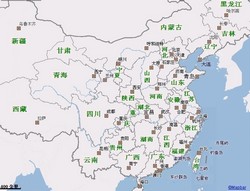Les Chengyu sont des proverbes chinois généralement composés de 4 caractères. Nous avions déjà vu « Yu Gong déplace les montagnes » en voici un autre « contempler le monde du fond du puits ».
Chengyu are chinese proverb generally written with 4 characters. I have already mentioned “Yu Gong moves the mountains” there is yet another one “look at the world from the bottom of a well”成语是中文谚语,一般是四个字。我已经讲述了“愚公移山”,现在这是其它的成语叫“井底之蛙”。
有一只青蛙,住在一口井里。
Il y avait une fois une grenouille qui vivait dans un puits.
Once upon a time, there was a frog that lived in a well.一天,青蛙正在井边跳着玩儿,忽然遇到了一只从海里来的海龟。青蛙对海龟说:
Un jour, la grenouille était en train de s’amuser à sauter dans le puits, lorsque soudain une tortue venue de la mer fit irruption. La grenouille dit à la tortue :
One day, the frog was jumping with fun in the well, when a turtle came out. The frog said to the turtle:“ 你看,我住在这儿多快乐呀!高兴的时候就在井边上玩儿一会儿;
« Tu vois, je suis très heureuse ici ! Quand je suis contente je m’amuse dans le puits ;
« You see, I am happy here! When I am happy I play in the well; 累了,就回到井旁边去休息;想游泳,就跳到井里游来泳去;
quand je suis fatiguée, je retourne dans le puits pour me reposer ; si j’ai envie de nager je plonge dans le puits pour nager.
When I am tired, I go back to well to rest; if I want to swim I dive in the well to swim想散步,就在泥土上走一走。
Si je veux me promener, je vais alors dans la boue.
If I want to walk around, I tread in the mud.你看,谁比得上我呢!我是这儿的主人,生活非常快乐,
Tu vois, qui peut me surpasser. Ici je suis le maître, ma vie est très heureuse,
You see who can surpass me. Here I am the master, I am happy with life. 请你到井里来玩儿玩儿吧!” 海龟听了,想进去看看。
Viens un peu t’amuser dans le puits ! ». La tortue écoutait, elle avait envie d’y aller voir.
Come and play with me in the well! ». The turtle listened, she wished to go and see.可是,它的左腿还没有全进去,右腿就卡住了。
Mais, à peine avait-elle mis le pied gauche dans le puits que le pied droit se coinça.
But no sooner had she put the left foot in the well than the right foot got jammed. 它立刻退了出来,对青蛙说:
Elle se dégagea aussitôt et dit à la grenouille :
She released it immediately and said to the frog :“你见过海吗?海的宽,不只千里,海的深,不只几千仗。
« As-tu déjà vu la mer ? L’étendue de la mer, plus de dix mille lieues, la profondeur de la mer, plus de dix mille pieds.
« Have you already seen the sea ? The sea’s expanse, more than ten thousand miles, the sea’s depth, more than thousand feet.住在那样广阔无边的大海里,才是真正的快乐呢!”
vivre dans la grandeur infinie de l’océan, c’est vraiment cela le bonheur ! »
To live in the infinite expanse of the sea, this is really happiness!”青蛙听了海龟的话,感到很吃惊。它想:
La grenouille entendant les paroles de la tortue, se sentit très troublée. Elle pensait
The frog listening to the turtle’s speech, felt disturbed. She thought: 啊,井外边还有这样的世界呀!
Ah bon, à l’extérieur du puits peut-il y avoir cette sorte de monde !
Ah, outside the well there is such a world!这有一个成语“坐井观天”,也是这个意思。
Il y a aussi ce proverbe « contempler le ciel du fond d’un puits » qui a ce sens.
There is also this proverb having this meaning “look at the world from the bottom of a well”Pinyin / 拼音
井底之蛙
jǐng dǐ zhī wā
有一只青蛙,住在一口井里。
yoǔ yī zhī qīng wā ,zhù zaì yī koǔ jǐng lǐ 。
一天,青蛙正在井边跳着玩儿,
yī tiān ,qīng wā zhēng zaì jǐng biān tiaò zhe wán ér ,
忽然遇到了一只从海里来的海龟。青蛙对海龟说:
hū rán yù daò le yī zhī zòng haǐ lǐ laí de haǐ guī 。qīng wā duì haǐ guī shuō :
“ 你看,我住在这儿多快乐呀!
gaō xìng de shí hoù jiù zaì jǐng biān shàng wán ér yī huì ér ;
高兴的时候就在井边上玩儿一会儿;
“ nǐ kān ,wǒ zhù zaì zhè ér duō kuaì lè yā !
累了,就回到井旁边去休息;
leí le ,jiù huí daò jǐng páng biān qù xiū xī ;
想游泳,就跳到井里游来泳去;
xiǎng yoú yǒng ,jiù tiaò daò jǐng lǐ yoú laí yǒng qù ;
想散步,就在泥土上走一走。
xiǎng sàn bù ,jiù zaì nì tǔ shàng zoǔ yī zoǔ 。
你看,谁比得上我呢!
nǐ kān ,sheí bǐ de shàng wǒ ne !
我是这儿的主人,生活非常快乐,
wǒ shì zhè ér de zhǔ rén ,shēng huó feī cháng kuaì lè ,
请你到井里来玩儿玩儿吧!” 海龟听了,想进去看看。
qǐng nǐ daò jǐng lǐ laí wán ér wán ér ba !” haǐ guī tīng le ,xiǎng jìn qù kān kān 。
可是,它的左腿还没有全进去,右腿就卡住了。
kě shì ,tā de zuǒ tuǐ haí meí yoǔ quán jìn qù ,yoù tuǐ jiù qiǎ zhù le 。
它立刻退了出来,对青蛙说:
tā lì kè tuì le chū laí ,duì qīng wā shuō :
“你见过海吗?海的宽,不只千里,海的深,不只几千仗。
“nǐ jiàn guò haǐ mǎ ?haǐ de kuān ,bù zhī qiān lǐ ,haǐ de shēn ,bù zhī jī qiān zhàng 。
住在那样广阔无边的大海里,才是真正的快乐呢!”
zhù zaì nà yàng guǎng kuò wú biān de dà haǐ lǐ ,caí shì zhēn zhēng de kuaì lè ne !”
青蛙听了海龟的话,感到很吃惊。它想:
qīng wā tīng le haǐ guī de huà ,gǎn daò hěn chī jīng 。tā xiǎng :
啊,井外边还有这样的世界呀!
á ,jǐng waì biān haí yoǔ zhè yàng de shì jiè yā !
这有一个成语“坐井观天”,也是这个意思。
zhè yoǔ yī gè chèng yǔ “zuò jǐng guān tiān ”,yě shì zhè gè yì sī 。
Voici une petite vidéo pour les enfants qui illustre ce proverbe (mais ne sommes-nous pas tous des grands enfants ?):
This is a video clip for children which illustrates this proverb (Aren’t we all children?)这个视频为孩子印证了这个成语。(我们也都是大孩子,是不是?)
Source / 来源:
http://www.cnfla.com/flash/77.htm








